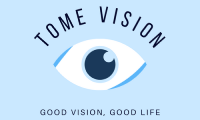Understanding Presbyopia: Why We Need Reading Glasses
As we age, our bodies undergo significant changes, and our eyes are no exception. One common vision problem that affects people over the age of 40 is presbyopia. Presbyopia is an age-related condition that leads to a gradual loss of ability to see close objects clearly. In this article, we will delve into the causes of presbyopia, its symptoms, and how reading glasses can help.
Causes of Presbyopia:
Presbyopia occurs when the lens of the eye becomes less flexible over time. This loss of flexibility makes it more difficult for the eyes to focus on nearby objects, resulting in blurry vision. The exact cause of this condition is still not fully understood, but it is believed to be a natural part of the aging process. Over time, the lens becomes less elastic, leading to the inability to adjust its shape to focus on nearby objects.
Symptoms of Presbyopia:
One of the earliest signs of presbyopia is experiencing difficulty in reading small print or having to hold reading material at arm’s length to see it clearly. Other symptoms may include eye strain, headaches, or the need for brighter lighting when reading. Individuals with presbyopia may find it challenging to perform tasks that require close-up vision, such as sewing, threading a needle, or using a smartphone.
How Reading Glasses Help:
Reading glasses are a common solution for presbyopia and can dramatically improve vision for those affected by this condition. They work by compensating for the age-related changes in the lens. By providing additional magnification, reading glasses help the eyes to focus more easily on close-up objects. They make the text appear larger, making it easier for the eyes to see and comprehend.
Advantages of Reading Glasses:
Reading glasses offer several advantages for individuals with presbyopia. Firstly, they are a cost-effective and non-invasive solution. Unlike more complex vision correction methods such as surgery, reading glasses can be easily purchased and used without any risks or side effects. Additionally, they provide instant relief by enhancing near vision and eliminating the need to strain the eyes.
Choosing the Right Reading Glasses:
Selecting the right reading glasses is crucial for maximizing comfort and vision improvement. Here are some tips to consider:
1. Have your eyes examined: Before purchasing reading glasses, it is important to have your eyes checked by an optometrist or ophthalmologist. They can determine the correct prescription strength needed and any other vision issues that may be present.
2. Choose the correct power: Reading glasses are available in various strengths, typically ranging from +1.00 to +4.00 diopters. Opt for a power that allows you to read comfortably at a normal distance, without having to strain or hold the material too close.
3. Evaluate frame styles: Reading glasses come in a variety of frame styles to suit different face shapes and personal preferences. Consider the frame material, size, and shape that are most comfortable for you.
In conclusion, presbyopia is a common age-related vision problem that affects the ability to see up close. Reading glasses provide an effective and easy solution for individuals with presbyopia, alleviating the symptoms and improving near vision. By understanding the causes and symptoms of presbyopia and making informed choices in selecting reading glasses, individuals can maintain a clear and comfortable vision even as they age.
